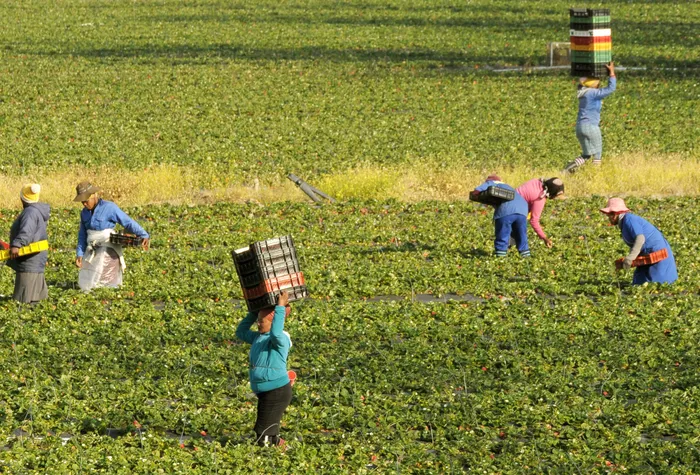The agricultural industry is still generating jobs, despite some concerns surrounding it
UNEMPLOYMENT

In reality, for a variety of reasons, I believe that the number of people working in the agriculture sector will likely rise in the second quarter of 2025.
Image: Tracey Adams/Independent Newspapers
By Thabile Nkunjana
In the first quarter of 2025, there were 930 000 primary agriculture jobs in South Africa, an 11% yearly decrease and a 1% quarterly increase. Strong activity in the livestock industries and the recovery of grains and oilseeds from the drought served as the foundation for the quarterly improvements.
Many individuals are becoming more and more aware of the significance of the agriculture sector for the country's overall economy as well as for jobs and food security. This has been proven on a few occasions, including during the COVID-19 lockdown periods and in Q4 2024, when the sector kept the country's economy fromentering a recession.
Therefore, it raises some concerns when the sector has a quarterly or annual reduction in employment.
But depending on the nature of the sector, employment figures will inevitably change over time. The sector's employment levels are influenced by a number of fundamental factors, including weather patterns, seasonality, disease outbreaks, and trade.
Thus, the 11% yearly drop in quarter 2 shouldn't raise any red flags. Because of the generally excellent agricultural conditions, we anticipate that employment will continue to be strong this year.
In reality, for a variety of reasons, I believe that the number of people working in the agriculture sector will likely rise in the second quarter of 2025.
First off, one of the largest employers in the sector is the citrus industry, whose harvesting has been booming in recent weeks. There has been an early harvest, and some citrus products are currently making their way to export markets.
Second, a number of improvements have been made, and farmers are gradually returning to the fields to harvest after the summer grains and oilseeds were delayed due to the heavy rains that were seen in recent weeks. As a result, the near future activity is anticipated to increase.
Thirdly, a far more accurate picture of this season's field crop is presented by the Crop Estimate Committee (CEC) statistics. 18.01 million tons of production were predicted by the third CEC for South Africa's summer crop production season in 2024–2025. Compared to the previous production season, this is a 16% increase.
This estimate includes dry beans, soybeans, groundnuts, sorghum, sunflower seeds, and yellow and white maize. The foot and mouth disease outbreak that was recently reported from KwaZulu-Natal, Gauteng, and Mpumalanga is currently the only cause for concern. As a result, China temporarily banned the importation of red meat from South Africa.
However, many, myself included believe that given the current situation, it is reasonable to argue that temporary export limitations should be placed on the impacted areas rather than the entire country. This is because China has decided to completely ban red meat imports from South Africa.
Furthermore, the country's export activity usually rises in the second quarter as opposed to the first, though this may change based on the seasons in which commodities are produced and other factors.
Additionally, the 930 000 jobs in the agriculture industry in the first quarter are far more than the 872 000 averageduring the previous five years.

Mr Thabile Nkunjana is a senior economist under the Trade Research Unit at the National Agricultural Marketing Council,
Image: LinkedIn
* Thabile Nkunjana is a senior economist under the Trade Research Unit at the National Agricultural Marketing Council.
** He writes on his personal capacity, and does not, necessarily express of IOL or Independent Media.
Visit: www.businessreport.co.za